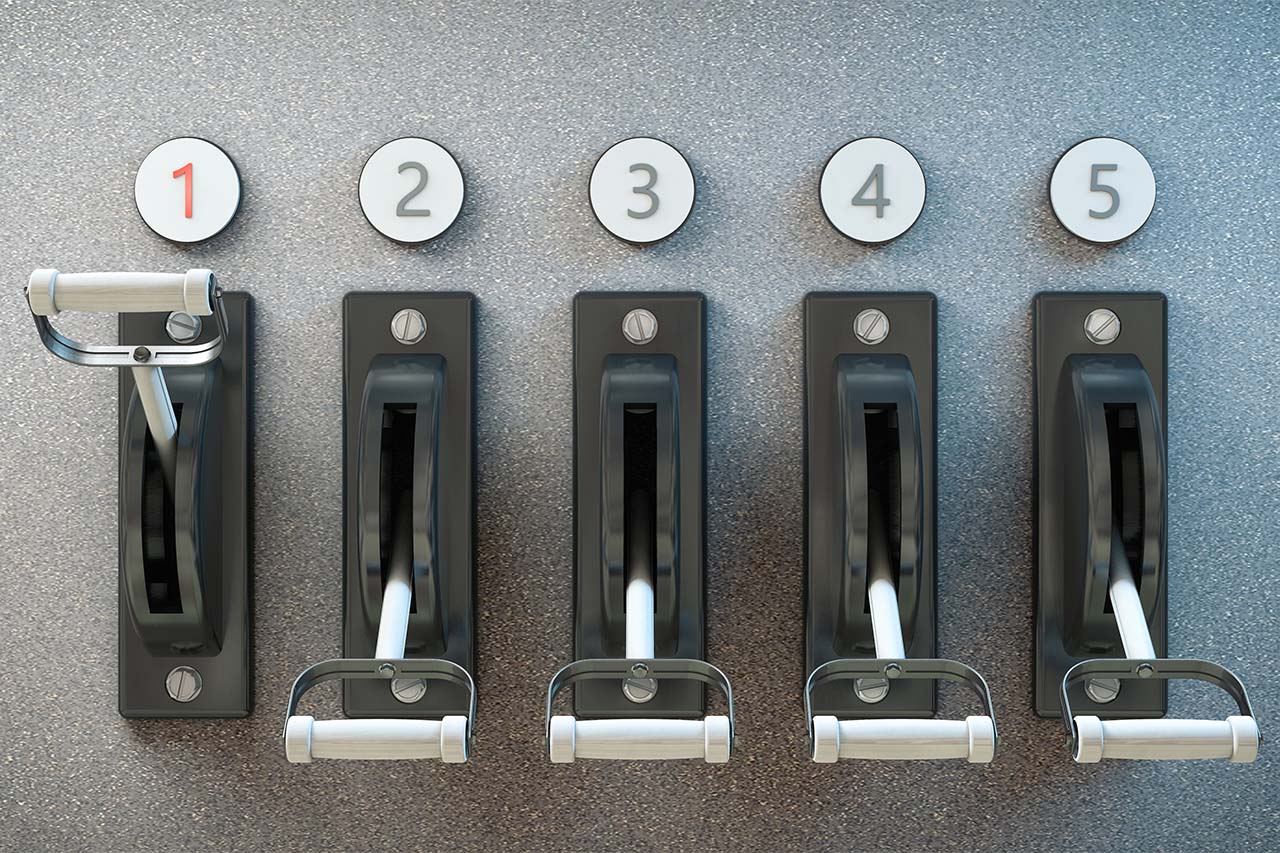Although the pre-foreclosure acquisition path presents complexities and challenges, the rewards can be substantial for those who navigate it deftly.
In today’s residential market, potential sellers are on the sidelines, locked into low-interest-rate mortgages. With new loan rates pushing 8% nationally, those would-be sellers cannot trade up or move laterally for the same monthly out-of-pocket interest payments, creating supply gridlock.
Well-capitalized institutional buyers, first-time flippers, and desperate would-be homeowners further exacerbate the supply constraints by aggressively bidding on quality available assets. To battle these competitors, investors must rely on relationships and creativity to find new properties. One of those creative options is learning how to buy properties before the foreclosure auction (pre-foreclosure).
A pre-foreclosure transaction involves the sale of a distressed property with a defaulted mortgage that is headed toward a foreclosure auction. It generally involves one of the following options: contracting with the lender for an approved short sale, purchasing the defaulted note, buying the foreclosure judgment, or selling the property through a forward contract requiring the lender to first take title at the foreclosure auction.
Pre-foreclosure transactions provide unique opportunities for buyers of properties, private lenders, and sellers of distressed assets, but they also come with risks and complexities that need to be understood. To be active in the pre-foreclosure space, all parties should understand the transaction from all angles (buyers, sellers, and lenders) so that challenges to a successful transaction are mitigated early in the process.
With that in mind, let’s explore several best practices when pursuing this unique and sometimes challenging strategy.
Know the Market and the Property
As with all real estate investments, market and property due diligence are fundamental elements of a pre-foreclosure transaction. The adage that “you make your money on the buy” holds true in pre-foreclosure transactions just as it does in more traditional acquisition channels. Investors and lenders alike often get into trouble when they chase volume or yield at the expense of real estate underwriting fundamentals. Identifying and sticking to disciplined underwriting guidelines or the “target buy box” is critical.
If you are entertaining a pre-foreclosure transaction, you are likely a knowledgeable investor or lender who understands real estate due diligence, but it never hurts to underscore its importance and to highlight a few unique challenges with these transactions.
The most notable challenge of many pre-foreclosure transactions is that an uncooperative homeowner often occupies the home, blocking access to the property and making it difficult to assess the overall condition of the asset. Many pre-foreclosure properties are acquired with only a drive-by inspection. The investor or lender is making assumptions about the interior condition and potential rehab costs based on the condition and upkeep of the home’s exterior. Items to look for in this instance are roof condition (a potential big-ticket repair), upkeep of the exterior, landscaping maintenance, and the number, quality, and condition of vehicles parked in the driveway and yard.
For example, a poorly maintained home showing exterior-deferred maintenance, an unkempt yard, and numerous vehicles (indicating a high number of occupants) usually reflects a similar interior condition. In such cases, the investor or lender will want to pad the budget to assume a full interior renovation. Conversely, a well-maintained house with clean landscaping and a washed car in the driveway indicate the interior budget can be streamlined for a more aggressive purchase or loan on the property.
One final note of caution: When conducting due diligence, investors and lenders alike should be wary of the legal liability and potential safety risks of stepping foot (trespassing) on a property where a disgruntled homeowner faces the threat of foreclosure and eviction.
Understand Liens, Assessments, and Legal Risks
The laws and regulations surrounding pre-foreclosure properties vary from state to state and from jurisdiction to jurisdiction within a state. Buyers or lenders in a pre-foreclosure transaction must understand which prior liens and assessments will be wiped out by the foreclosure and which will survive post-sale. Conducting a lien and title search and having a title attorney review it is highly recommended as a first step. Once the lien and title search has been satisfactorily completed, several options exist to transact on a distressed asset.
- With a lender-approved short sale, the defaulting homeowner, investor, and lender have consented to the sale, release of the mortgage liens, and transfer of title. This type of transaction carries the least risk to all parties and more closely mirrors a traditional closing.
- Conversely, a sale of the lender’s non-performing note requires the buyer to step into the lender’s shoes and assume the legal and timing risk of pursuing a foreclosure judgment or settlement with the defaulted homeowner. This will have the most protracted timeline and carry the greatest risk of delays and unforeseen costs.
- Similarly, but with less risk, the sale of the foreclosure judgment involves stepping into the lender’s shoes after the judgment has been entered into the court records, but before the foreclosure sale date. In this instance, the legal and timing risks have been mitigated to a certain degree, but the risks of a borrower’s bankruptcy, court delays, and unforeseen costs remain.
- Finally, a pre-foreclosure purchase through a forward contract is a hybrid transaction in which the lender forecloses on a property with negative equity to ensure the title reverts to the noteholder and then transfers it to the forward contract buyer. This transaction involves sharing the liens, assessments, and legal risks, where the seller will assume some and the buyer others. In most cases, the foreclosing lender is the seller, although in a short sale the seller would be the homeowner subject to the lender approval of the sale.
In each type of pre-foreclosure transaction, the purchase contract must clearly outline which liens, assessments, and legal risks the buyer will assume and which the seller will assume. This can vary from transaction to transaction, because there are fewer set guidelines compared to a traditional purchase or loan.
Maintain Situational Awareness
Not all pre-foreclosure transactions are created equal. Investors looking to purchase pre-foreclosure properties need to understand the options the existing lender and defaulted borrower have to pursue the path with the highest probability of success. When a property is headed to a foreclosure auction, there is a low probability the defaulted borrower will suddenly re-perform on the mortgage. A major factor to consider pertains to the defaulted borrower’s capacity and/or willingness to work with the noteholder toward a quick resolution versus delaying the process to stay in the property rent- or payment-free for as long as possible.
The equity value in a property may also change how the property’s current lender or note holder chooses to address the default. Significant home price appreciation over the past five years has resulted in a much higher percentage of distressed borrowers now having equity over and above the debt. For a successful buy strategy, a prospective investor and their lender should determine both the current value of the asset and the legal balance (what the borrower owes the note holder(s), including accrued default interest, late fees, default servicing fees, and the lender’s legal costs).
Following are several nuanced strategies to consider en route to a successful pre-foreclosure transaction.
Modifications. If the noteholder is the original lender, they will be much less likely to entertain a modification of the loan (since they likely tried this before the property becoming pre-foreclosure). On the other hand, if the note holder is a secondary purchaser of the note, they likely purchased the note at a discount to the property value and the face amount on the note. Skillful note investors sometimes assist a defaulted borrower in modifying the mortgage before the foreclosure date as a way for the borrower to avoid foreclosure and for the investor to ultimately acquire the asset at an attractive current cash yield on the modified note rate.
Short Sales. Most noteholders are more likely to consider a short sale than loan modification. Some pre-foreclosure transactions involve a short sale whereby an investor negotiates with the defaulted borrower to buy the asset while paying off the lender at an agreed-upon price that is usually below the legal balance owed on the loan. There are certain risks to short sales versus other options, the most common being the potential for the investor and a new lender to waste considerable time pursuing a short sale at the behest of agents, only to find out the current note holder has no desire to consider a short sale.
Pre-Foreclosure Auction Platforms. These are platforms that offer actionable pre-foreclosure auctions through which the buyer can lock in a purchase price on a forward contract before the property goes to a competitive bid at the foreclosure auction. When properly executed, the pre-foreclosure auction benefits the seller (foreclosing noteholder) as well as the new investor and lender.
The seller benefits in these transactions by locking in an execution ahead of the foreclosure auction and mitigating the risk that the property does not sell or sells below the market value.The seller also benefits by having a pre-vetted purchaser approved prior to the scheduled option, thereby eliminating fallout caused by unqualified or nefarious bidders at public auctions. Often, pre-foreclosure auctions result in higher sales prices than public auctions.
The investor benefits by controlling the inventory before losing out in a competitive auction format, even if they must pay more for the asset. The pre-foreclosure auction allows an investor to plan their resources and allocate capital more efficiently, including the financing from a new lender on the pre-foreclosure purchase.
Although the pre-foreclosure acquisition path presents complexities and challenges, the rewards can be substantial for those who navigate it deftly. To be successful, investors and lenders must perform quality due diligence on the property’s value and liens, assessments, and title to identify and quantify risks. This research must be combined with an understanding of state, local, and municipal foreclosure and bankruptcy laws and procedures. If that expertise does not reside in-house, a knowledgeable title and foreclosure attorney can be worth their weight in gold by helping you avoid pitfalls.
Once the specific pre-foreclosure strategy has been identified, a well-defined contract that clearly outlines the responsibilities of the buyer, seller, and new lender will help avoid surprises at the closing table and unintended costs. Understanding and adhering to these best practices lays the foundation for a potentially lucrative channel for distressed property inventory where savvy investors and lenders can use loan modifications, short sales, or pre-foreclosure auctions to generate deal flow and achieve superior returns on their capital.












Leave A Comment